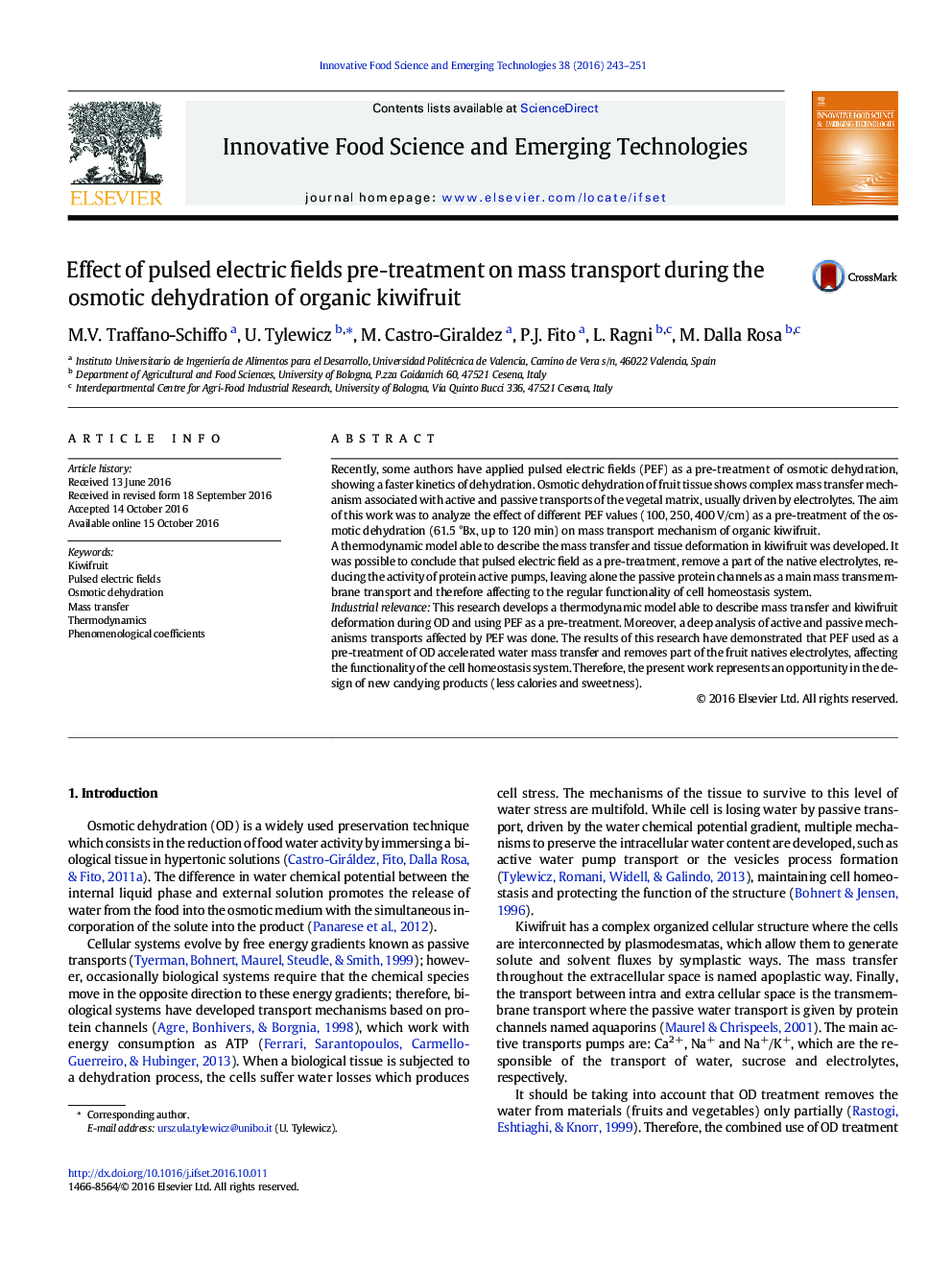| Article ID | Journal | Published Year | Pages | File Type |
|---|---|---|---|---|
| 5521911 | Innovative Food Science & Emerging Technologies | 2016 | 9 Pages |
â¢The usefulness of PEF as pre-treatment of OD of kiwifruit has been demonstrated.â¢A thermodynamic approach able to analyze tissue deformation has been developed.â¢The phenomenological coefficients of water and sucrose have been obtained.â¢Samples pre-treated with PEF show higher water losses and less sugar gain.â¢PEF removes part of the native electrolytes, reducing the activity of proteins pumps.
Recently, some authors have applied pulsed electric fields (PEF) as a pre-treatment of osmotic dehydration, showing a faster kinetics of dehydration. Osmotic dehydration of fruit tissue shows complex mass transfer mechanism associated with active and passive transports of the vegetal matrix, usually driven by electrolytes. The aim of this work was to analyze the effect of different PEF values (100, 250, 400 V/cm) as a pre-treatment of the osmotic dehydration (61.5 °Bx, up to 120 min) on mass transport mechanism of organic kiwifruit.A thermodynamic model able to describe the mass transfer and tissue deformation in kiwifruit was developed. It was possible to conclude that pulsed electric field as a pre-treatment, remove a part of the native electrolytes, reducing the activity of protein active pumps, leaving alone the passive protein channels as a main mass transmembrane transport and therefore affecting to the regular functionality of cell homeostasis system.Industrial relevanceThis research develops a thermodynamic model able to describe mass transfer and kiwifruit deformation during OD and using PEF as a pre-treatment. Moreover, a deep analysis of active and passive mechanisms transports affected by PEF was done. The results of this research have demonstrated that PEF used as a pre-treatment of OD accelerated water mass transfer and removes part of the fruit natives electrolytes, affecting the functionality of the cell homeostasis system. Therefore, the present work represents an opportunity in the design of new candying products (less calories and sweetness).
